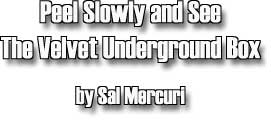 |
This review was originally published Fall 1995 in
The Velvet Underground Volume 4
(Fierce Pup Productions) |
|
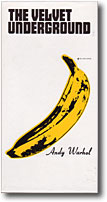 In the eighties, with the CD inextricably entrenched as the medium, the subindustry of the box set sprang up with innumerable tributes, collections, compilations. complete works of... just about everyone under the sun. Some were well deserved. others seriously questionable - Phil friggin' Collins had a box set at a time when he shamelessly shat and served anything and everything the market would bear. In the eighties, with the CD inextricably entrenched as the medium, the subindustry of the box set sprang up with innumerable tributes, collections, compilations. complete works of... just about everyone under the sun. Some were well deserved. others seriously questionable - Phil friggin' Collins had a box set at a time when he shamelessly shat and served anything and everything the market would bear.
Hey, wait a minute! What about that Vinyl Underwear band from the '60's that everyone always cites and namedrops and claims they were influenced by, and are so cool to like but nobody ever plays their records on the radio? How about a box set for them? Naaahhhh, who'd by it? Besides. they only made four albums.
Well if they only made four albums, then why do I own over 100 lp's, CD's, 45's, with their name on 'em? Someone must be buying these records besides me, if they keep making them.
|
Then in the early '90's, over a quarter century since there's been anything called The Velvet Underground, a little indie label from Australia called Raven Records had the audacity to put out a quasi-official 3CD set called What Goes On 1965-1990 which until now has been the only such animal. barring bootlegs compilations, repackaged sets, in existence.
The Raven set, though highly laudable and ambitious, failed primarily due to legal hassles. It's tough to vigorously promote a product which features unofficial material.
What Goes On therefore had to settle for sneaking in a few oddities and curios and became little more than another compilation. It did however, feature the superior mono mix of most of the first lp, closet mix of the third. and excellent notes in its beautifully illustrated booklet. |
Now, lo these 30 years since they first surfaced, The Velvet Underground have an official, legitimate, promotable, air-playable, beautifully packaged five CD box set chock-full-o' unearthed gems, which given the, ahem, thoroughness of some bootleggers, have unbelievably escaped previous release. |
PolyGram Records set one Bill Levenson to the task of producing this gargantuan project. Lest we forget, Mr. Levenson has made quite the happy little careerette for himself vis the VU. He is the man responsible for what must be the only worthy recorded representations of The Velvet Underground.
Levenson worked on the lost VU tapes which brought forth VU - Previously Unreleased, and Another View. Besides cleaning and tidying the stuff which we'd heard on all those trashy boots of vinyl, Levenson actually produced what must be the best sounding compilation Best of the Velvet Underground - Words and Music of Lou Reed. Through his hard work and obvious love for the subject, Mr. Levenson revitalized and energized the VU for a whole new gang of kids.
Now he's produced this monumental set with the care and attention we've come to expect. |
The specs are staggering: 74 tracks, 25 previously unreleased (some have been booted), 12 demos, 7 'Loaded' outtakes, and 6 live tracks, an excellently annotated 88 page booklet with notes by VU-phile David Fricke, and many rare photos, and to top it all off the box has a banana on the front which actually peels!!
But there really is much more here! |
|
First of all, the four studio lp's are presented in their original versions, that is #1 is the mono version [note: it's actually the stereo version], #3 is Lou's original closet mix, #4 features restored, full length versions of Sweet Jane with the 'Heavenly wine and Roses' break, Rock-n-Roll in its unedited form - the final solo flows in rather than jutting out, and New Age gets its long lost coda back. |
The 25 previously unreleased tracks need closer attention. One of the five discs is comprised of several takes of Venus in Furs, Heroin, All Tomorrow's Parties, Waiting for My Man, Wrap Your Troubles in Dreams, and Prominent Men. These were recorded in John Cale's Ludlow Street apartment in July 1965 along with Lou and Sterling. The set is all acoustic and sans drums. This is perhaps the most mystifying recording ever by the Velvet Underground. |
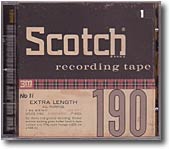 The songs are treated very sparely; guitars, voice, viola, and something called a sarinda. What is shocking is how different they sound from any version ever heard. They share the same chords and lyrics with their more familiar live and recorded renditions but they are not the same songs. The songs are treated very sparely; guitars, voice, viola, and something called a sarinda. What is shocking is how different they sound from any version ever heard. They share the same chords and lyrics with their more familiar live and recorded renditions but they are not the same songs.
Cale sings Venus in Furs as a hymn, Satanic perhaps, but a hymn nonetheless. The song maintains its sinister, dark aura by virtue of the chords played. But the sheer malice. menace, of the debut version are not there. Where the banana Venus lunges and tears like a shark, this one snakes along just below the surface, uncertain. Wrap Your Troubles in Dreams which would see light on Nico's debut solo, Chelsea Girl, is treated sentimentally, doleful, infused with a sense of loss which I'm certain is due more to Cale's vocal than anything else. Waiting for My Man, All Tomorrow's Parties, and the never before heard of Prominent Men clearly defy Lou Reed's later rejection of Dylan's influence - in the case of Prominent Men the influence practically amounts to possession, with Lou's nasal, Dylanesque whine and blaring harmonica framing The Times They are a Changin chordage. Waiting for My Man is a country-honk romp. The only track which bears any resemblance to its final version is Heroin. Here Lou sounds very young, vulnerable and in trouble. It sounds like it should, like the real thing.
|
For the fan, this disc alone is priceless. None of these tracks have ever been bootlegged. They offer a stupefying glimpse into the VU before their exposure to Andy Warhol and his world, before Moe's thunderous beat, before electricity. The performances are unpolished, a bit tentative though not at all self-conscious, and quiet. It's as if being drawn into the Warhol world liberated them and allowed them to play harder, nastier, louder. |
|
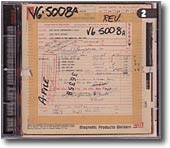 Disc two opens with the single edit of 'All Tomorrow's Parties', boasting a punchier mix intended for the radio. Alas, the airwaves remained Velvet free in 1967. Disc two opens with the single edit of 'All Tomorrow's Parties', boasting a punchier mix intended for the radio. Alas, the airwaves remained Velvet free in 1967.
The Velvet Underground and Nico follows in its entirety. Don't let anyone kid you. The album was originally recorded in mono and that mix is superior to the artificially created later stereo mix. Great care has been taken to use the best sources possible and then improve them. Yes, it is possible to use the technology for good. You no longer get that dreaded hiss before the music starts, or the unintentional distortion attributed to poor engineering. Just the music. It should be noted that not even pristine original pressings of the lp sound as good as this.
I paid big bucks for a minty fresh mono promo copy and about 30 seconds into 'Venus in Furs' it occurs to the engineer to turn all the levels up dramatically.
|
An interesting little side note - for years it was thought that the 70's and 80's reissues of the first lp were the stereo mix. Well, yes and no. It's been recently discovered that some editions are actually the mono mix, verifable by attentive listenings and the V-5008 etched into the inner groove. Then some are a curious blend of one side stereo and one side mono, and others are all stereo. Always a twist and a turn with this band. |
The banana year is further represented by some other interesting tracks. One, Melody Laughter, has been bootlegged often with varying degrees of sound quality from atrocious to so-so. The source for this track is an audience tape from November 11, 1966. It was recorded at an EPI performance at the Valleydale Ballroom in Columbus, Ohio and is part of the only known document, of the Velvet Underground and Nico live (unless you count the brief I'll Be Your Mirror rehearsal included in the Andy Warhol From Tapes CD sold at the Warhol Museum).
The performance is edited to 10 minutes from its original 30+. Bill Levenson described in ICE last winter that while the Raven Box included a section of this track, the PolyGram set actually culled different sections and edited them together to form a progressive piece which builds from the introduction of individual instruments to a roaring freeform jam. In the ten minute edit we get the evolution of the piece rather than a mere out of context snippet.
Disc two closes with Nico's It Was a Pleasure Then and Chelsea Girls which could have easily been included on the banana lp. It has been noted in the past that by deleting the dread flutes and strings which plague the Chelsea Girl lp, we'd have a seamless companion piece to the first album. And Nico's voice was never more at home than on these songs. |
|
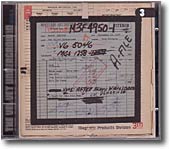 The third disc brings to light yet another never before heard song called There is No Reason. This song begins the demo suite which includes the 4 tracks credited in bootlegs as Sterling's acetate. They were recorded in early 1967 in John Cale's Ludlow Street apartment, which appears to have been the band's rehearsal/recording space. Along with There is No Reason, Sheltered Life with the goofy Cale kazoo solo, It's All Right (The Way that You Live), I'm Not Too Sorry (Now That You're Gone), and Here She Comes Now open up the White Light/White Heat disc. The third disc brings to light yet another never before heard song called There is No Reason. This song begins the demo suite which includes the 4 tracks credited in bootlegs as Sterling's acetate. They were recorded in early 1967 in John Cale's Ludlow Street apartment, which appears to have been the band's rehearsal/recording space. Along with There is No Reason, Sheltered Life with the goofy Cale kazoo solo, It's All Right (The Way that You Live), I'm Not Too Sorry (Now That You're Gone), and Here She Comes Now open up the White Light/White Heat disc.
These demos are a bit misleading when one considers that the band was gearing up for the most raucous recording of its life.
They are sedate tunes which feature clean guitar and bass lines. None of the wild noise explorations of WL/WH. That is more evident in the two live tracks which follow: Guess I'm Falling in Love and Booker T, both from an April 1967 gig at the Gymnasium, NYC, and both all out rockers. Booker T, presented in its full 6.30 version [note: a few seconds have actually been edited out at the beginning as compared with the version on John Cale's Paris s'éveille], aptly leads into the White Light lp which receives the Levinson treatment.
In the vinyl and first CD editions, the sound was awful! Separating the two channels for The Gift was impossible because the crummy mastering permitted tons of spillover from one channel into the other. Not here. Of course no amount of doctoring is going to change the distorted, blown-out sound of this album. That could only have been taken care of 28 years ago in a crummy little recording studio. Disc three closes with Stephanie Says, Temptation Inside Your Heart, and the hypnotic Hey, Mr. Rain (version l) which were believed to be the very last appearances of John Cale in the studio with the Velvet Underground, all previously available on the VU and Another View sets.
Listening to White Light/White Heat and its complimentary materials is a bit heart breaking for VU fans. The abandon with which the band attacks the songs, the shared vocal duties, all point to what could have been had the specters of egos, drugs, cash concerns, and the evil manager not gotten in the way. This was perhaps the band's purest workunencumbered by a temperamental, at times out of place chanteuse, no distractions from Factory cast members, no hyper-media happenings to support or be obscured by - just the four of them in a room with tape rolling and amps turned upto 11.
|
|
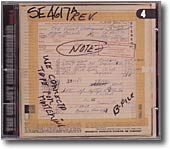 Onward to disc four. What Goes On from the October 2, 1968 [note: it's really October 4, 1968] show at Cleveland's La Cave club, marks Doug Yule's first, appearance as a member of the band. He puts in an admirable performance after a mere three days of rehearsals. The real highlight of this live track is Lou Reed's razor slash guitar solo which cuts and cuts to the bone and then keeps going. Onward to disc four. What Goes On from the October 2, 1968 [note: it's really October 4, 1968] show at Cleveland's La Cave club, marks Doug Yule's first, appearance as a member of the band. He puts in an admirable performance after a mere three days of rehearsals. The real highlight of this live track is Lou Reed's razor slash guitar solo which cuts and cuts to the bone and then keeps going.
As the VU's fall of 1968 road trek moved west, the record company pushed for another record. In California, the band was instructed to spend whatever time not taken up performing or rehearsing, in the recording studio. It was there at Hollywood's TT&G studio that the third VU album was made. With Lou's voice taking a nightly pounding on stage, Doug Yule steps up to the mike and offers some of the sweetest (not sappy), most delightfully innocent, vocals ever.
The box offers Lou's infamous 'closet mix', which is not better or worse than the more familiar Val Valentin mix, just different. The difference is one between an artist, and an engineer - one works to depict a personal vision, the other turns knobs and manipulates levers competently. As this box is intended to finally honor the band and their vision, it's only fitting that original mix be used. The most obvious variation is the alternate take of 'Some Kinda Love'. In the Valentin version, the take used features jangling guitars and straight ahead vocals typical of the band's live renditions of that song. The closet mix version sounds much more desperate, like Lou was lying on the floor, on the nod, with a microphone placed nearby as he mutters the virtues of all kinds of love.
|
Summer and Fall of 1969 saw the band once again on the road and in the studio. The sessions at New York's Record Plant provide disc four's closing tracks, Foggy Notion (the only Velvet Underground song on which Lou Reed has no writing credit), I Can't Stand It, I'm Sticking with You and Lisa Says' all from 1985's VU collection. The October 28, 1969 gig at Dallas' End of Cole Ave yields It's Just Too Much which has only been available on bootleg [note: it was also available on the scarce CDEP given away with the 1990 French Polydor box set]. Providing a glimpse of things to come, the disc's final cut is the recently discovered Countess from Hong Kong on which Lou rediscovers the harmonica, and John Cale shares authorship. Cale will make a suprise appearance on the group's swan song Loaded. |
|
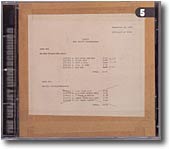 The box closes as dramatically as it opened. The newfound gems of disc one are joined by disc five's revelations. Lou Reed has long disowned Loaded as a bastardized work, tampered with and but,chered in the studio. Well, Lou, this should molliffy things a bit. The Loaded disc is a joyous revelation for fans. As the VU's most popular record, Loaded is the only one which has always been in print and also the most maligned. Too poppy, blatantly commercial, diluted, claim some curmudgeons. The fact remains that for all it obvious attempts at hit singlesville, Loaded is still the home of some of the greatest Rock-n-Roll ever. It's easy to take Sweet Jane, and Rock-n-Roll for granted; they're the only VU songs which ever get any airplay, classics nonetheless! VU fans owe PolyGram a huge tip of the hat for restoring these classics to their original glory. On the previous CD editions of Loaded, the intro to Sweet Jane is somehow mastered at a much lower volume than the rest of the song. Here it's right up front. The edited 'Heavenly wine and roses' break is restored, although it seems that the vocal track is incomplete. The track notes do not acknowledge the restoration of the guitar chords which precede the final solo in Rock-n-Roll but they are there. Lou has commented that the solo was inserted and in fact the restored version allows the solo to flow in rather than stick out. New Age is finally allowed to fulfill its glorious finale with the coda restored. The real shockers on this fthal disc though, are the never before heard outtakes from Loaded. Looks like Lou had quite the little cache o' tunes on which to base a solo record or two. Satellite of Love, Walk and Talk, Oh, Gin, Sad Song, Ocean, Ride into the Sun, and I Love You were originally recorded by The Velvet Underground and as played by the VU they are far superior works. Ocean is not the version which was released on VU. This is from the Loaded sessions with one John Cale on organ and viola. Apparently, John was brought back into the studio by Steve Sesnik in a futile attempt to revive the band. What he did manage to accomplish is a majestic epic, beautifully performed and produced, featuring some of Sterling's most beautiful guitarwork ever. No way this should could not have been a major hit! There are many versions of Ride into the Sun out on bootlegs. The one here managed to escape release and is the most moving. Doug Yule's voice proves to be a major asset for the band once again on this lovely ballad. Walk and Talk, perhaps one of the weakest of all Velvet songs is transformed into a slower, funkier grind much more satisfying than any previous incarnation. The lyrics to Sad Song bear little resemble to the Berlin cut. it, remains a stately tale of castles, kilts, and Mary, Queen of Scots. Of the two final live tracks, Some Kinda Love, from the Live at Max's tapes but missing from that lp, proves that even in its death throes, the band remained a vital live unit, hard pounding and energized. I'll Be Your Mirror is from the Max's release, and the closer I Love You, which would first, surface on Lou's debut solo lp, offers solace from the turbulence of the Loaded sessions. The box closes as dramatically as it opened. The newfound gems of disc one are joined by disc five's revelations. Lou Reed has long disowned Loaded as a bastardized work, tampered with and but,chered in the studio. Well, Lou, this should molliffy things a bit. The Loaded disc is a joyous revelation for fans. As the VU's most popular record, Loaded is the only one which has always been in print and also the most maligned. Too poppy, blatantly commercial, diluted, claim some curmudgeons. The fact remains that for all it obvious attempts at hit singlesville, Loaded is still the home of some of the greatest Rock-n-Roll ever. It's easy to take Sweet Jane, and Rock-n-Roll for granted; they're the only VU songs which ever get any airplay, classics nonetheless! VU fans owe PolyGram a huge tip of the hat for restoring these classics to their original glory. On the previous CD editions of Loaded, the intro to Sweet Jane is somehow mastered at a much lower volume than the rest of the song. Here it's right up front. The edited 'Heavenly wine and roses' break is restored, although it seems that the vocal track is incomplete. The track notes do not acknowledge the restoration of the guitar chords which precede the final solo in Rock-n-Roll but they are there. Lou has commented that the solo was inserted and in fact the restored version allows the solo to flow in rather than stick out. New Age is finally allowed to fulfill its glorious finale with the coda restored. The real shockers on this fthal disc though, are the never before heard outtakes from Loaded. Looks like Lou had quite the little cache o' tunes on which to base a solo record or two. Satellite of Love, Walk and Talk, Oh, Gin, Sad Song, Ocean, Ride into the Sun, and I Love You were originally recorded by The Velvet Underground and as played by the VU they are far superior works. Ocean is not the version which was released on VU. This is from the Loaded sessions with one John Cale on organ and viola. Apparently, John was brought back into the studio by Steve Sesnik in a futile attempt to revive the band. What he did manage to accomplish is a majestic epic, beautifully performed and produced, featuring some of Sterling's most beautiful guitarwork ever. No way this should could not have been a major hit! There are many versions of Ride into the Sun out on bootlegs. The one here managed to escape release and is the most moving. Doug Yule's voice proves to be a major asset for the band once again on this lovely ballad. Walk and Talk, perhaps one of the weakest of all Velvet songs is transformed into a slower, funkier grind much more satisfying than any previous incarnation. The lyrics to Sad Song bear little resemble to the Berlin cut. it, remains a stately tale of castles, kilts, and Mary, Queen of Scots. Of the two final live tracks, Some Kinda Love, from the Live at Max's tapes but missing from that lp, proves that even in its death throes, the band remained a vital live unit, hard pounding and energized. I'll Be Your Mirror is from the Max's release, and the closer I Love You, which would first, surface on Lou's debut solo lp, offers solace from the turbulence of the Loaded sessions.
|
|
Peel Slowly and See is the first major label retrospective for a band which has gotten little or no attention from major labels. It is a work worthy of the band's legend and legacy, and a clinic on how to produce a box set. PolyGram and Bill Levenson have earned the eternal thanks and respect of Velvet Underground fans all over the world. By way of comparison, RCA's Lou Reed anthology - Between Thought and Expression, now pales in execution and presentation. At the time I found impossible to comprehend how a major record company like RCA could not come up with more than photos of Lou's album covers to include in the box's booklet! They did a fine job on the actual discs, technically. But box sets are about more than just the music. They are designed (or should be) with fans in mind. The accompanying 88 page booklet included in Peel Slowly and See, features many rare photos, some great ones of the band in the studio. Sterling Morrison made his extensive memorabilia collection available and we are treated to studio log sheets, posters, even handwritten directions to the Shrine Auditorium. None of this stuff is wasted on VU fans. We want everything! David Fricke, a true VU-phile in the rock journalism world, provides an excellent essaythistory of the band with loads of new commentary from Moe, John, Sterling, and Lou. His only real mistake is following the unfortunate tradition of Doug Yule bashing. There is no legitimate way to downplay Yule's importance and input in the post Cale years, he should be recognized as a vital contributor to the music. The Box is scheduled for release on September 26th. Go out and buy it, get your friends to buy it, and throw everything else out. |
|
©1995 Fierce Pup Productions, courtesy of Sal Mercuri |
|
Home
by Olivier Landemaine
Last modified: October 25, 2008 |

 In the eighties, with the CD inextricably entrenched as the medium, the subindustry of the box set sprang up with innumerable tributes, collections, compilations. complete works of... just about everyone under the sun. Some were well deserved. others seriously questionable - Phil friggin' Collins had a box set at a time when he shamelessly shat and served anything and everything the market would bear.
In the eighties, with the CD inextricably entrenched as the medium, the subindustry of the box set sprang up with innumerable tributes, collections, compilations. complete works of... just about everyone under the sun. Some were well deserved. others seriously questionable - Phil friggin' Collins had a box set at a time when he shamelessly shat and served anything and everything the market would bear. The songs are treated very sparely; guitars, voice, viola, and something called a sarinda. What is shocking is how different they sound from any version ever heard. They share the same chords and lyrics with their more familiar live and recorded renditions but they are not the same songs.
The songs are treated very sparely; guitars, voice, viola, and something called a sarinda. What is shocking is how different they sound from any version ever heard. They share the same chords and lyrics with their more familiar live and recorded renditions but they are not the same songs. Disc two opens with the single edit of 'All Tomorrow's Parties', boasting a punchier mix intended for the radio. Alas, the airwaves remained Velvet free in 1967.
Disc two opens with the single edit of 'All Tomorrow's Parties', boasting a punchier mix intended for the radio. Alas, the airwaves remained Velvet free in 1967. The third disc brings to light yet another never before heard song called There is No Reason. This song begins the demo suite which includes the 4 tracks credited in bootlegs as Sterling's acetate. They were recorded in early 1967 in John Cale's Ludlow Street apartment, which appears to have been the band's rehearsal/recording space. Along with There is No Reason, Sheltered Life with the goofy Cale kazoo solo, It's All Right (The Way that You Live), I'm Not Too Sorry (Now That You're Gone), and Here She Comes Now open up the White Light/White Heat disc.
The third disc brings to light yet another never before heard song called There is No Reason. This song begins the demo suite which includes the 4 tracks credited in bootlegs as Sterling's acetate. They were recorded in early 1967 in John Cale's Ludlow Street apartment, which appears to have been the band's rehearsal/recording space. Along with There is No Reason, Sheltered Life with the goofy Cale kazoo solo, It's All Right (The Way that You Live), I'm Not Too Sorry (Now That You're Gone), and Here She Comes Now open up the White Light/White Heat disc. Onward to disc four. What Goes On from the October 2, 1968
Onward to disc four. What Goes On from the October 2, 1968  The box closes as dramatically as it opened. The newfound gems of disc one are joined by disc five's revelations. Lou Reed has long disowned Loaded as a bastardized work, tampered with and but,chered in the studio. Well, Lou, this should molliffy things a bit. The Loaded disc is a joyous revelation for fans. As the VU's most popular record, Loaded is the only one which has always been in print and also the most maligned. Too poppy, blatantly commercial, diluted, claim some curmudgeons. The fact remains that for all it obvious attempts at hit singlesville, Loaded is still the home of some of the greatest Rock-n-Roll ever. It's easy to take Sweet Jane, and Rock-n-Roll for granted; they're the only VU songs which ever get any airplay, classics nonetheless! VU fans owe PolyGram a huge tip of the hat for restoring these classics to their original glory. On the previous CD editions of Loaded, the intro to Sweet Jane is somehow mastered at a much lower volume than the rest of the song. Here it's right up front. The edited 'Heavenly wine and roses' break is restored, although it seems that the vocal track is incomplete. The track notes do not acknowledge the restoration of the guitar chords which precede the final solo in Rock-n-Roll but they are there. Lou has commented that the solo was inserted and in fact the restored version allows the solo to flow in rather than stick out. New Age is finally allowed to fulfill its glorious finale with the coda restored. The real shockers on this fthal disc though, are the never before heard outtakes from Loaded. Looks like Lou had quite the little cache o' tunes on which to base a solo record or two. Satellite of Love, Walk and Talk, Oh, Gin, Sad Song, Ocean, Ride into the Sun, and I Love You were originally recorded by The Velvet Underground and as played by the VU they are far superior works. Ocean is not the version which was released on VU. This is from the Loaded sessions with one John Cale on organ and viola. Apparently, John was brought back into the studio by Steve Sesnik in a futile attempt to revive the band. What he did manage to accomplish is a majestic epic, beautifully performed and produced, featuring some of Sterling's most beautiful guitarwork ever. No way this should could not have been a major hit! There are many versions of Ride into the Sun out on bootlegs. The one here managed to escape release and is the most moving. Doug Yule's voice proves to be a major asset for the band once again on this lovely ballad. Walk and Talk, perhaps one of the weakest of all Velvet songs is transformed into a slower, funkier grind much more satisfying than any previous incarnation. The lyrics to Sad Song bear little resemble to the Berlin cut. it, remains a stately tale of castles, kilts, and Mary, Queen of Scots. Of the two final live tracks, Some Kinda Love, from the Live at Max's tapes but missing from that lp, proves that even in its death throes, the band remained a vital live unit, hard pounding and energized. I'll Be Your Mirror is from the Max's release, and the closer I Love You, which would first, surface on Lou's debut solo lp, offers solace from the turbulence of the Loaded sessions.
The box closes as dramatically as it opened. The newfound gems of disc one are joined by disc five's revelations. Lou Reed has long disowned Loaded as a bastardized work, tampered with and but,chered in the studio. Well, Lou, this should molliffy things a bit. The Loaded disc is a joyous revelation for fans. As the VU's most popular record, Loaded is the only one which has always been in print and also the most maligned. Too poppy, blatantly commercial, diluted, claim some curmudgeons. The fact remains that for all it obvious attempts at hit singlesville, Loaded is still the home of some of the greatest Rock-n-Roll ever. It's easy to take Sweet Jane, and Rock-n-Roll for granted; they're the only VU songs which ever get any airplay, classics nonetheless! VU fans owe PolyGram a huge tip of the hat for restoring these classics to their original glory. On the previous CD editions of Loaded, the intro to Sweet Jane is somehow mastered at a much lower volume than the rest of the song. Here it's right up front. The edited 'Heavenly wine and roses' break is restored, although it seems that the vocal track is incomplete. The track notes do not acknowledge the restoration of the guitar chords which precede the final solo in Rock-n-Roll but they are there. Lou has commented that the solo was inserted and in fact the restored version allows the solo to flow in rather than stick out. New Age is finally allowed to fulfill its glorious finale with the coda restored. The real shockers on this fthal disc though, are the never before heard outtakes from Loaded. Looks like Lou had quite the little cache o' tunes on which to base a solo record or two. Satellite of Love, Walk and Talk, Oh, Gin, Sad Song, Ocean, Ride into the Sun, and I Love You were originally recorded by The Velvet Underground and as played by the VU they are far superior works. Ocean is not the version which was released on VU. This is from the Loaded sessions with one John Cale on organ and viola. Apparently, John was brought back into the studio by Steve Sesnik in a futile attempt to revive the band. What he did manage to accomplish is a majestic epic, beautifully performed and produced, featuring some of Sterling's most beautiful guitarwork ever. No way this should could not have been a major hit! There are many versions of Ride into the Sun out on bootlegs. The one here managed to escape release and is the most moving. Doug Yule's voice proves to be a major asset for the band once again on this lovely ballad. Walk and Talk, perhaps one of the weakest of all Velvet songs is transformed into a slower, funkier grind much more satisfying than any previous incarnation. The lyrics to Sad Song bear little resemble to the Berlin cut. it, remains a stately tale of castles, kilts, and Mary, Queen of Scots. Of the two final live tracks, Some Kinda Love, from the Live at Max's tapes but missing from that lp, proves that even in its death throes, the band remained a vital live unit, hard pounding and energized. I'll Be Your Mirror is from the Max's release, and the closer I Love You, which would first, surface on Lou's debut solo lp, offers solace from the turbulence of the Loaded sessions.